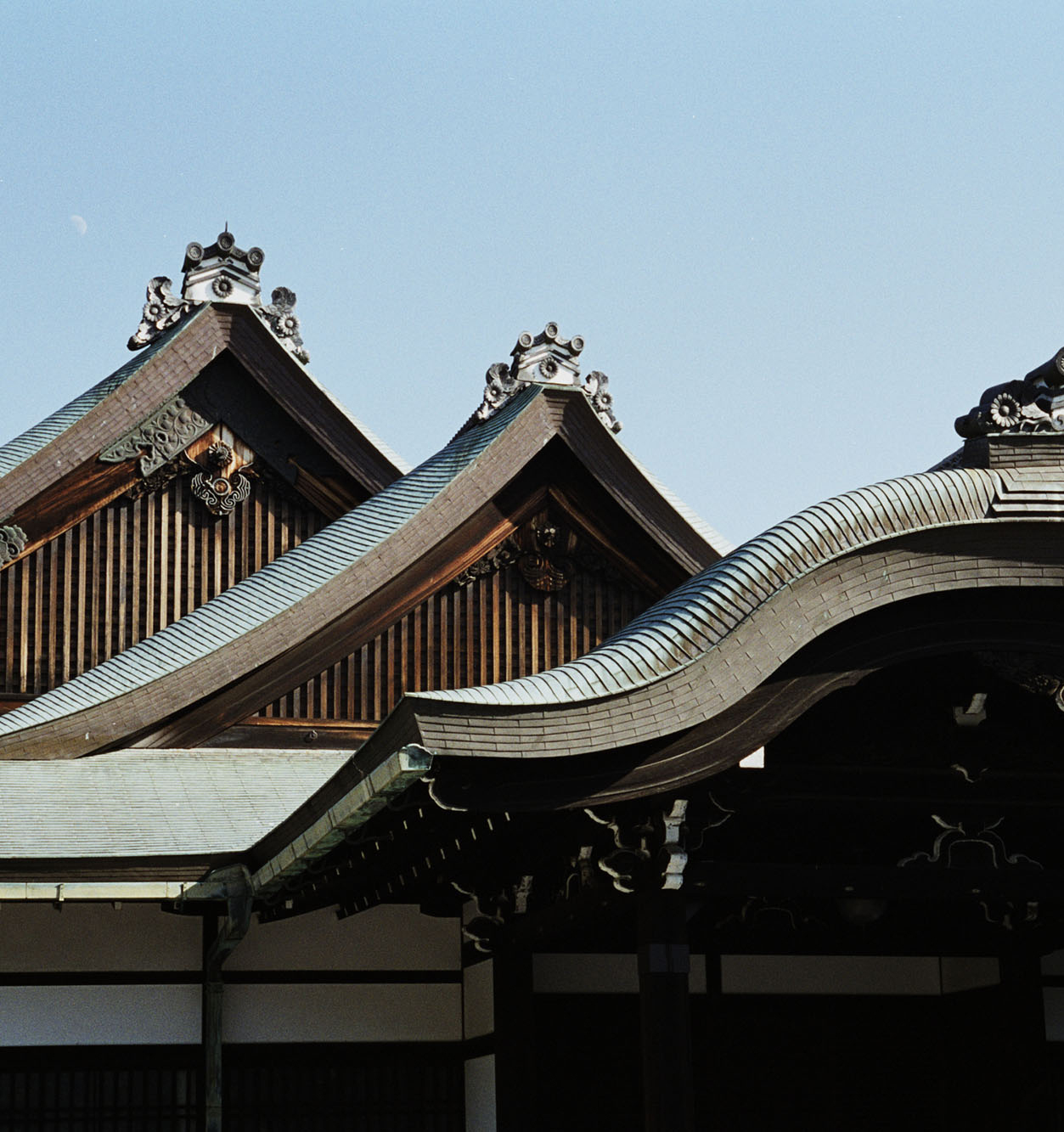DUO’S JOURNEY
Kyoto Kyoto Sento Imperial Palace
The Sento Imperial Palace was a residence for retired emperors. Its construction began in 1630, on the occasion of the retirement of Emperor Go-Mizunoo, who built the Shugakuin Imperial Villa. The garden was originally designed by Enshu Kobori and was later modified by retired emperors, including Emperor Go-Mizunoo, bringing it close to its present form.
Did you visit here to see shakkei?
Yamaguchi: We visited the Kyoto Sento Imperial Palace with an expectation to find neighboring textures on a smaller scale, not hakkei. But perhaps this was the most challenging place for such a theme. Finding spots for shooting photos was tough because the uneventful landscape continued in the garden. The somewhat unexpected imitation of an ocean in Minami-ike pond, like a magnified sandy beach consisting of cobbles about 10 cm in diameter, was not that attractive, although interesting.
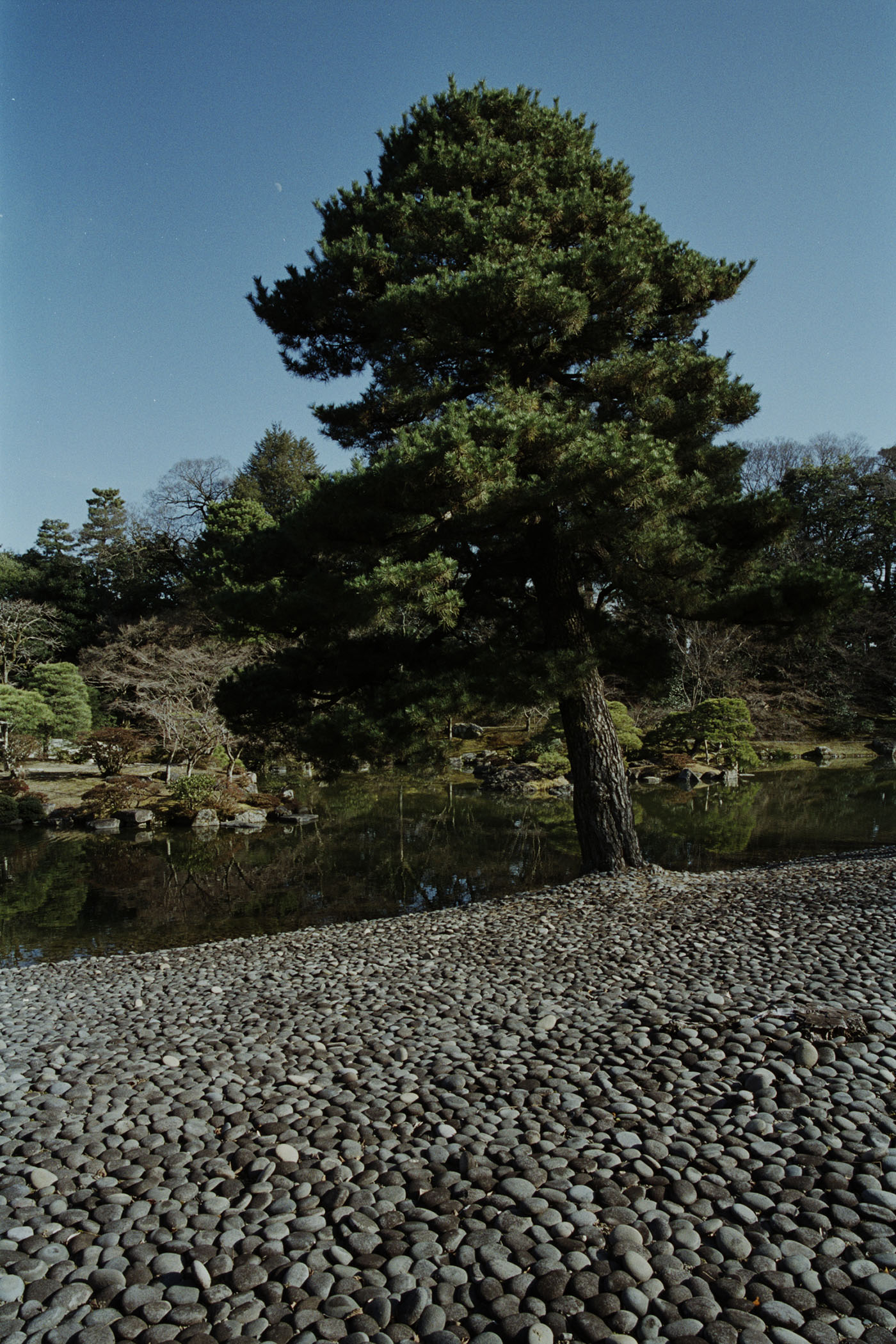
Kumon: The cobbles spread all over were interesting. An anecdote says that the feudal lord of Odawara offered the cobbles. Considering the historical background of stones having been used as a substitute for money and rice, I thought it shows how important the garden was. It was interesting that there was a tree-lined path next to the pond, and the bases of the trees were covered with moss, appearing like islands. It felt like there was another ocean next to the “ocean” pond. The photoshoot took place in winter, so there was no famous wisteria trellis, broadleaf tree leaves, or flowers.
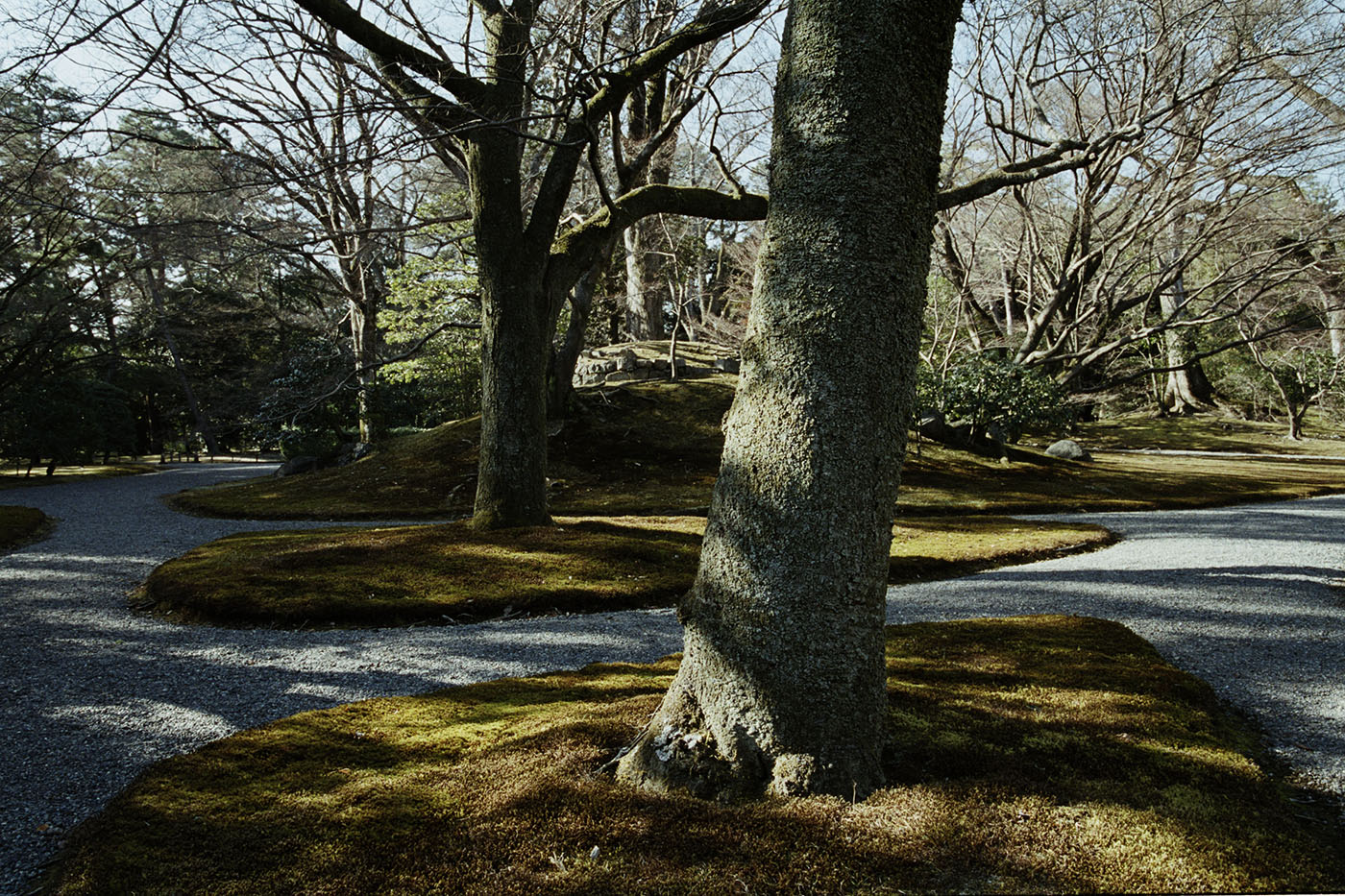
Yamaguchi: The Nantei garden of Otsunegoten is known for its pine, bamboo, and plum trees, with a pine near the center, a white and red plum in front of the building, and a bamboo grove at the back of the garden. The idea that pine, bamboo, and plum trees represent good fortune was introduced from China, and it can be said that the garden simply followed this. The Kyoto Imperial Palace has a famous cherry blossom tree and a tachibana tree in front of Shishinden, forming an interesting combination. Sento Imperial Palace’s iconic layout of white and red plum trees may seem natural superficially, but they could have been uniformly colored trees to be symmetric. So, this may also be called neighboring textures.
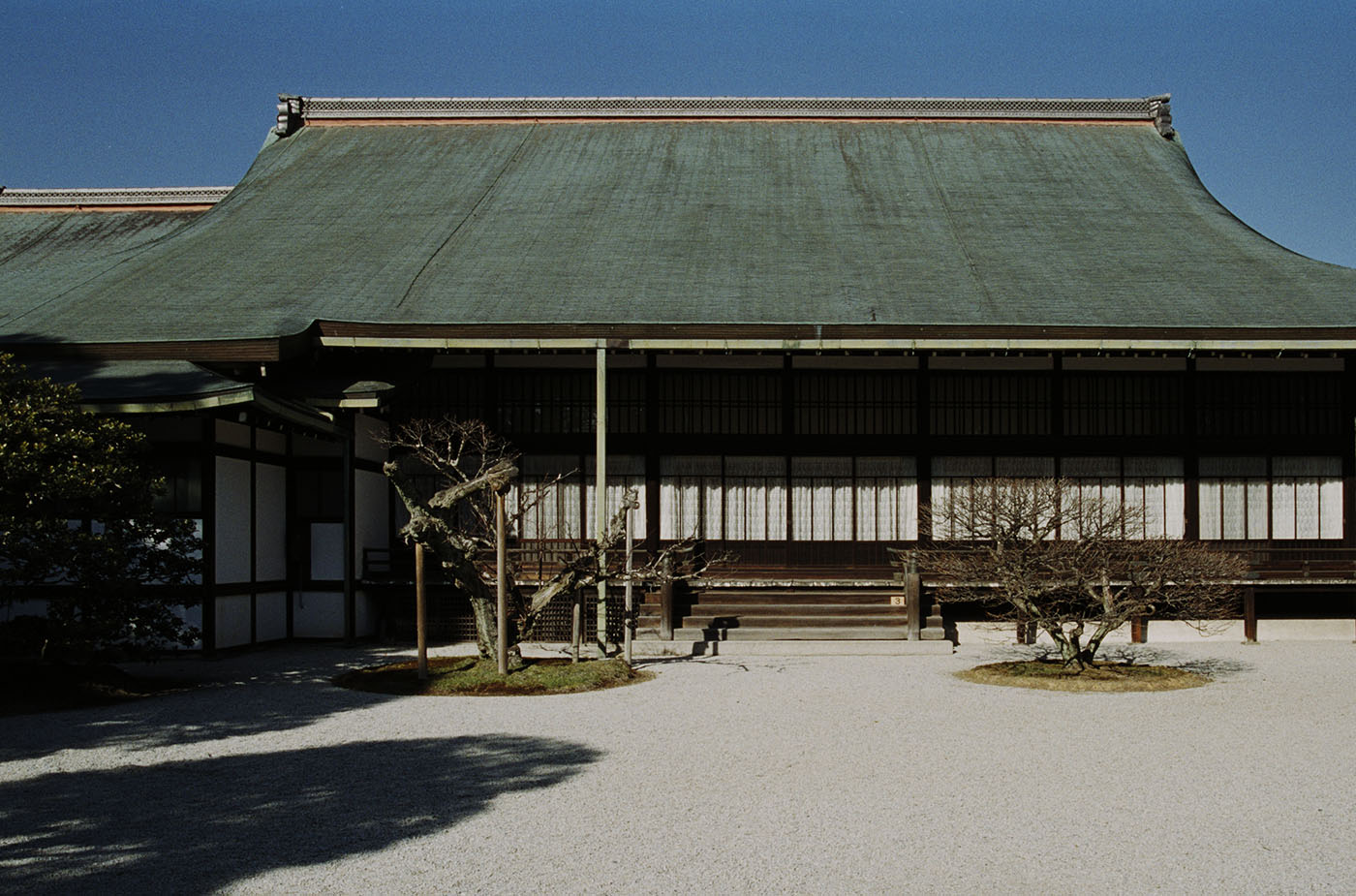
Yamaguchi: Looking at the overlapping roofs, the open shape of the frontmost roof makes sense, since it’s on the entrance side. But the two roofs on the back have slightly different details on their hahu (the triangular part on the front side of the roof). They could have been the same but are slightly different, and yet there is harmony.
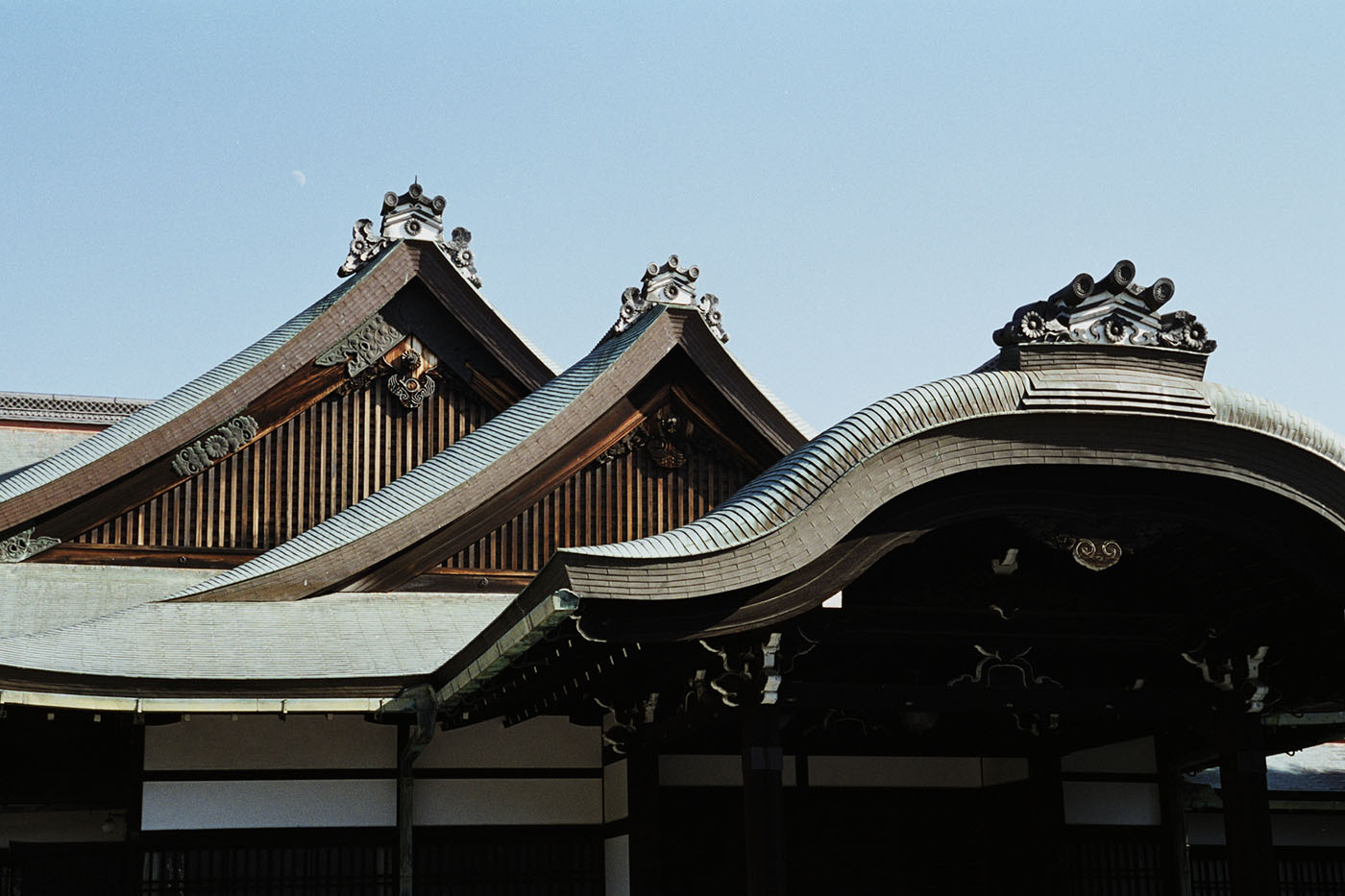
I think an interesting thing about Japanese culture is the unnecessariness of thinking about the reason for such differences. The number of nobles in the Heian period (794-1185) is thought to have been only about 500 to 1,000. Their aesthetics and sense of values were shared within this small group. I can imagine it wasn’t that difficult.
Even today, it’s quite common that a junior high school or a high school of such scale, for example, has its unique trends or aesthetics. The aesthetics in the Heian period was a sense of values fostered among such a small group of people, and I don’t think seeking a strong rationale would give us an answer. What’s important is that we find them attractive today by seeing the results of the values.
What were the thoughts of the people who worked on this building?
Yamaguchi:
Perhaps everyone kept referring to something else. I think Japanese culture is a culture of references. People are more proactive in improving already existing prototypes, rather than newly creating innovative products that never existed before, and this leads to a unique Japanese-ness. In this regard, I think we can take pride in the fact that we are still good at this kind of development in modern Japan.
We always refer to excellent precedents according to Japanese cultural attitudes, but there’s no need to ask for the reason for excellence, to say nothing of holding such a question. As a result of accumulating efforts to get closer to a prototype, more and more fascinating micro differences are generated, sometimes elevating the product into something in a different dimension.
Development of products, such as household appliances, always brings improved performance and functions—this development process is an extension of Japanese aesthetics. I’d like to see what would happen if development were to continue to the extreme, without hesitation and without stopping at a level that seems unnecessary for the end-users. I think it would bring us a uniquely Japanese innovation that I have never seen before.
Kumon: For me, it’s pointless to contemplate because I can’t figure out why I find something is good or not. When I am attracted to something, I somehow convert the feeling into simple words like interesting, pleasant, or cool. Of course, I’d be happy to understand what the historical background, influences, and reasons are by having them explained verbally in advance, but once I start the photo shooting phase, I don’t think about it anymore./p>
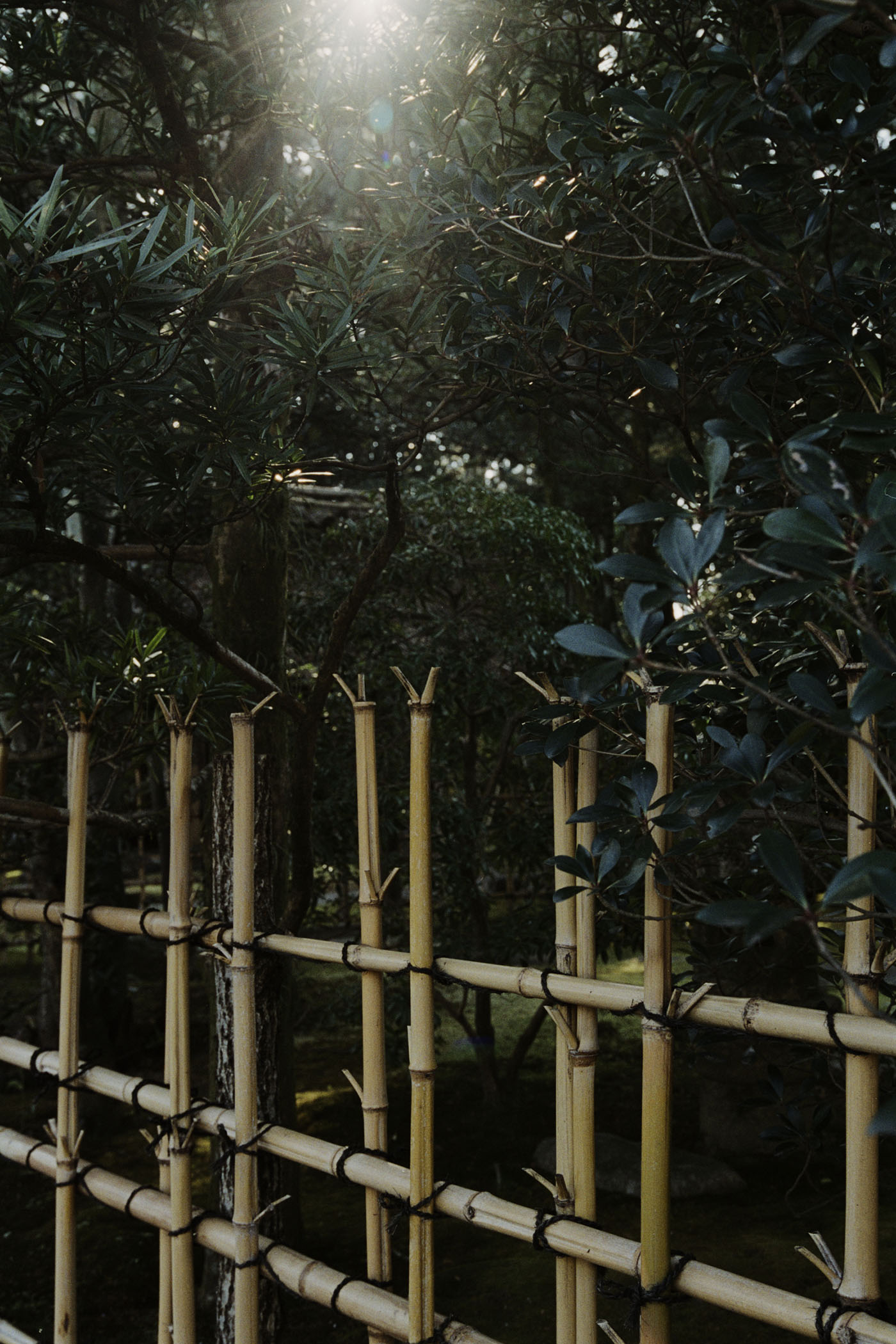
Mr. Kumon, how do you switch from the phase of gaining knowledge beforehand to the shooting phase where you transform it into your senses?
Kumon:
What I want is a reason for why I should confront the subject or a context for the encounter. Listening to the derivation, history, and people’s stories help me to clarify where to head next.
Then once I get to the shooting phase, the camera’s eye views things differently from my own eyes. Functions, purposes, and concepts of the hidden parts outside the screen are out of sight, and I ignore them as well. There is probably an influence of prior information, but in the end, I can only find things in the viewfinder.
This sometimes coincides with the intentions of Mr. Yamaguchi or the creators. It’s kind of aggressive, but I think I ultimately shoot as if I’m clipping a photo out by using my body and senses while shutting out what I’ve accepted and accumulated, and ignoring the concepts and purposes.
Yamaguchi: Mr. Kumon, I think what you can verbally express using your words about the thoughts you had then, is the concept for you. Your perception itself is an explanation of the work, isn’t it?
The aspect of collecting information realistically, and the aspect of physically taking photos. They may be related to the process that this project started by placing "shakkei" into a screen, and gradually shifted towards the subject.
Kumon: It’s a result of pursuing something with high density. I didn’t know what to look for at first, but my perspective became clearer through taking photos. Maybe hakkei goes along well with photography.
October 27, 2021
